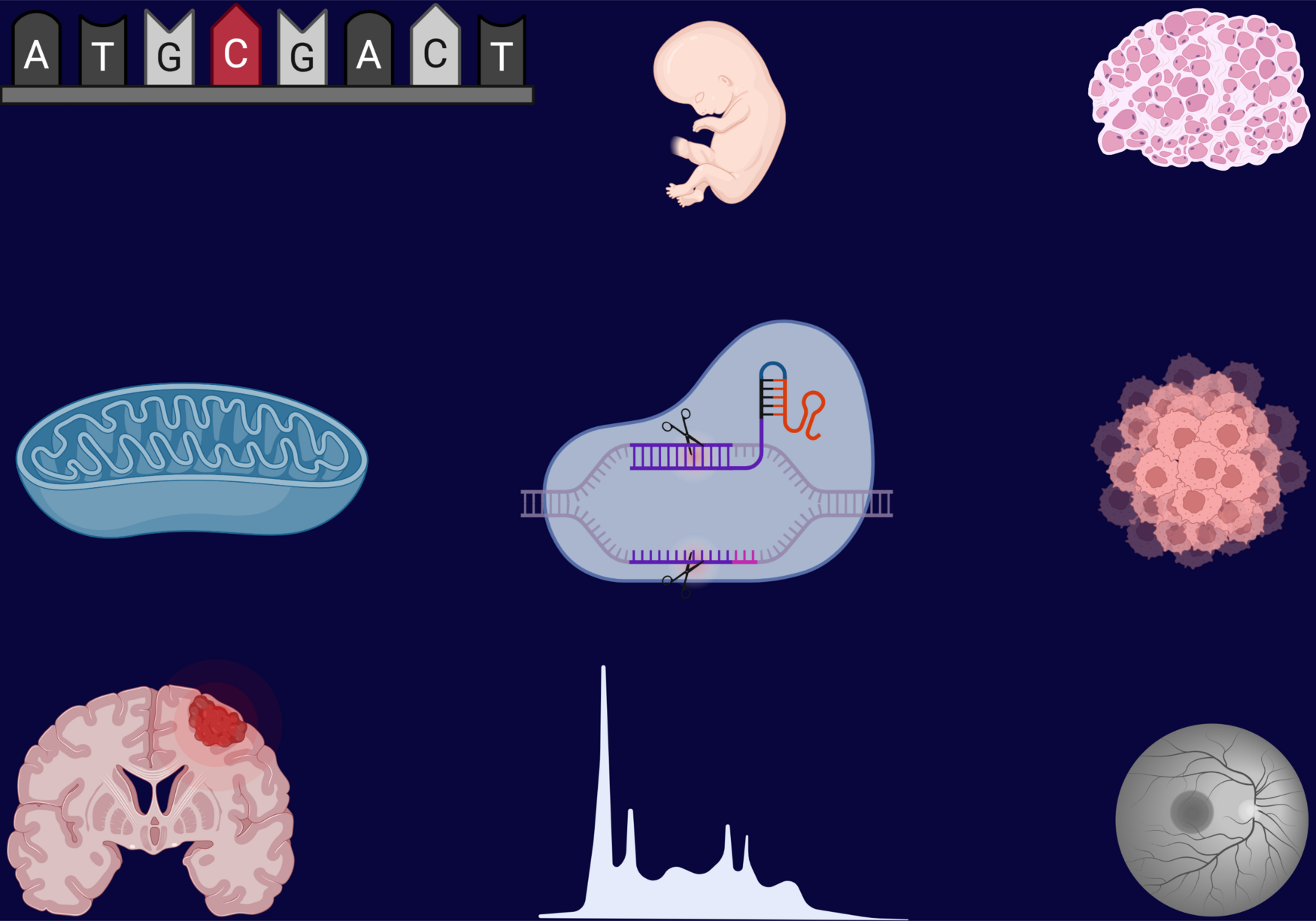
*Thank you to those who provided and contributed material for this content*
Many of our faculty conduct captivating research in both common and rare human medical conditions. Here are some examples:
The Andrulis lab focuses on the role of genetic and molecular alterations that may play a role in breast cancer and sarcoma and the clinical importance of these changes through multi-disciplinary studies. The group has recruited two major breast cancer cohorts: the NIH-funded Ontario Familial Breast Cancer Registry and an axillary node-negative breast cancer cohort. They study breast cancer risk, recurrence, progression and survival. Currently, a major area of interest for the group is the role of the tumour immune microenvironment. They are studying the interaction of tumour cells and immune cells, particularly tumour-infiltrating lymphocytes, in human breast cancer and sarcoma.
The Cohn lab aims to develop therapeutics and discover genes for rare hereditary diseases with gene editing and modulation methodologies. One of the group’s latest publications demonstrated a novel method using CRISPR saturation prime editing for variant classification and interpretation with NPC1 gene mutations, which causes Niemann-Pick disease. Other studies include using CRISPR/Cas9 to boost utrophin levels which modified Duchenne muscle dystrophy and demonstrating the role of polyamine levels in modifying congenital muscule dystrophy.
The Costain lab applies whole-genome sequencing to facilitate discovering and diagnosing rare diseases in children with serious health problems. Their group has been involved in describing new genetic causes of epilepsy, brain malformations, lung disease, and multisystem syndromes. Some of their publications include cohort studies applying targeted next-generation sequencing panels and whole exome sequencing for pediatric epilepsy patients and using genome sequencing for children with unexplained medical complexities. Other examples include observing how rare CNVs in the DMXL2 synaptic gene contribute to neurodevelopmental disorders (including identifying new deletions and mutations) and RAC3 missense variants causing a novel neurodevelopmental disorder,
The Dirks lab aims to gain insight into adult and pediatric brain tumour biology, with a focus on the connection between tumour growth and stem cells, as well as the role of different cell types in maintaining tumours. The group was the first to discover cancer stem cells in patient brain tumours. Some of their publications include demonstrating how medulloblastoma emerges from a rare and transient embryonic neuron precursor and glioblastoma cells having a proliferative hierarchy and chemotherapy expanding pre-existing drug-resistant glioblastoma stem cells.
The Dowling lab focuses on the mechanisms of and discovering therapies for childhood and infant muscle disorders, such as congenital myopathies and muscular dystrophies. Their studies included the first to demonstrate tamoxifen efficacy for myotubular myopathy and identify the first myotubular myopathy genetic modifier (PIK32CB). The group also obtained the first congenital myopathy prevalence data for any country/region and identified the first link between excitation-contraction deformities and myotubularin (phosphatase) dysfunction.
The Gallie lab specializes in the research of retinoblastoma. The group’s discoveries include identifying the RB1 gene as a tumour suppressor gene, identifying retinoma as a premalignant precursor of retinoblastoma and that KIF14 overexpression is associated with poor lung and ovarian cancer outcomes. They have also identified novel unrecognized retinoblastoma without RB1 mutations and developed assays to identify the unique RB1 mutation.
The Jackson lab utilizes mass cytometry for multiplexed imaging of tumour tissue to quantify single cancer cell phenotypes and markers alongside their interactions, organization and structural role. The group was behind the development of an open-source computational package called histology topography cytometry analysis toolbox (histoCAT). An additional publication characterized how they used imaging mass cytometry and multi-platform genomics to study the phenogenomics of breast cancer samples. Dr. Jackson is also the Canada Research Chair in Systems Pathology.
The Kalish lab specializes in molecular neuroscience and genomics of how pregnancy and early life influence neurodevelopment and plasticity. Recently, the group conducted a study on the impacts of SARS-CoV-2 infection in late pregnancy and the fetal immune response to maternal infection. Other publications include discovering how maternal inflammation and infection alter protein homeostasis in fetal mouse brains and altered gene expression in response to auditory experiences during critical periods of increased brain plasticity.
The Pearson lab focuses on medically relevant mutations of trinucleotide repeat expansions, the causes of diseases such as Huntington’s and myotonic dystrophy. One of their recent publications describes how a small compound called naphthyridine-azaquinolone that binds CAG DNA induces trinucleotide-repeat contractions, presenting a way to reduce expanded repeats. Another publication identified slipped-strand DNAs in trinucleotide repeats at a myotonic dystrophy type I locus in patient tissues, signifying slipped DNAs as a marker/product of repeat instability. Dr. Pearson is also the Canada Research Chair in Disease-associated Genome Instability.
The Sondheimer lab investigates the medical implications of mitochondrial gene expression regulation and mutations. Examples of areas of interest include how mitochondrial mutations affect medical conditions, whether increasing mitochondrial DNA provides a potential therapeutic route and the medical impacts of alterations in mtDNA maintenance and translation. Some of the group's studies include correlating divergence between mitochondrial and nuclear ancestry with preterm birth and using the software MitoTIP (mitochondrial tRNA informatics predictor) to predict if novel/rare mitochondrial tRNA sequences are pathogenic. They also found that using small molecule GQ-binding agents has the potential to shift heteroplasmic disease-associated mtDNA to wild-type versions.